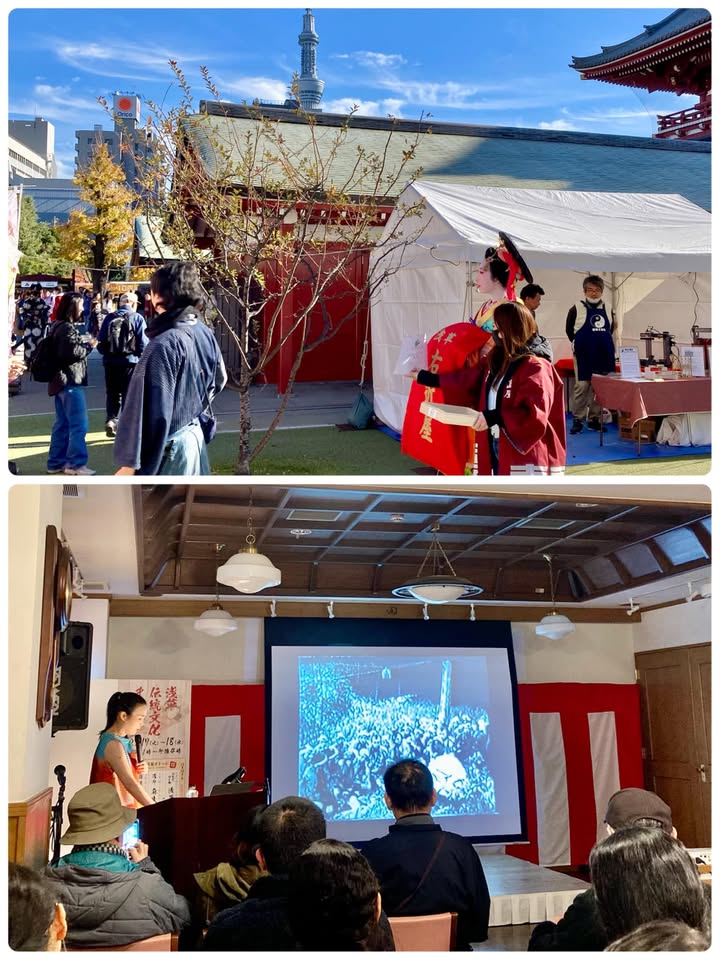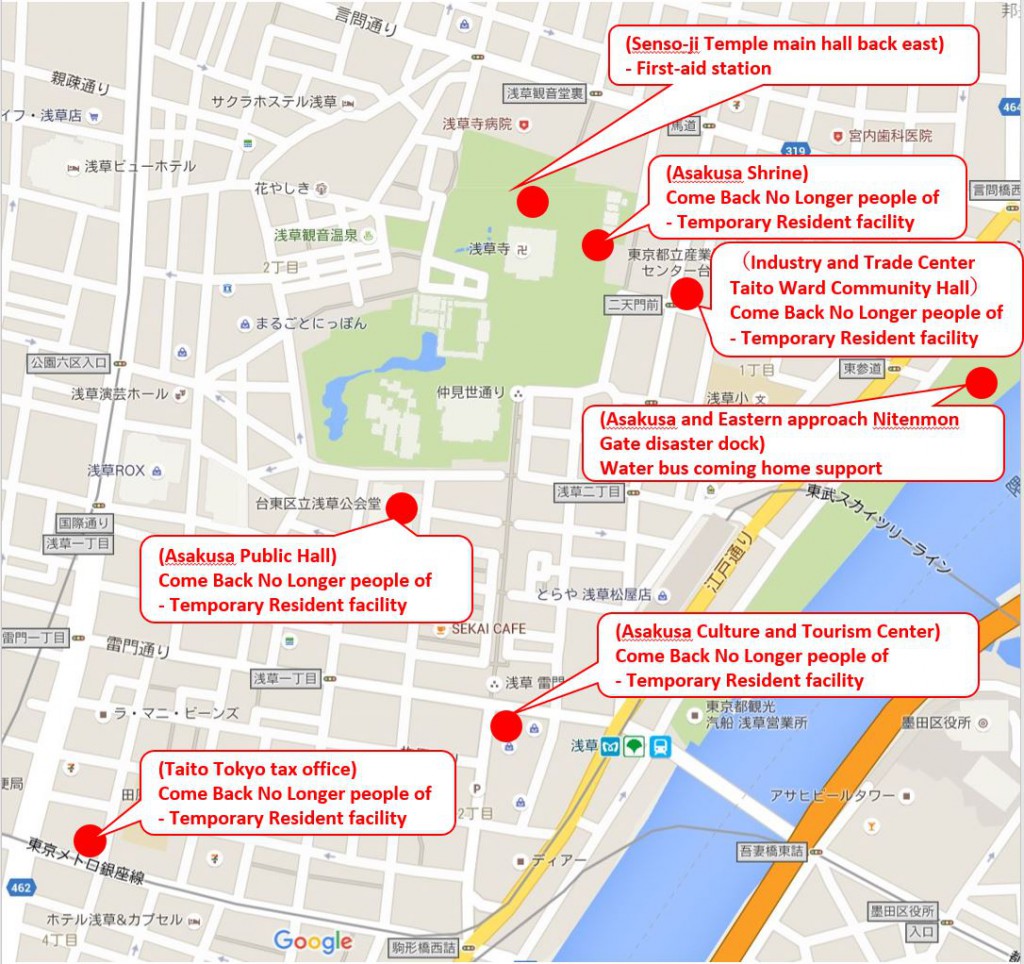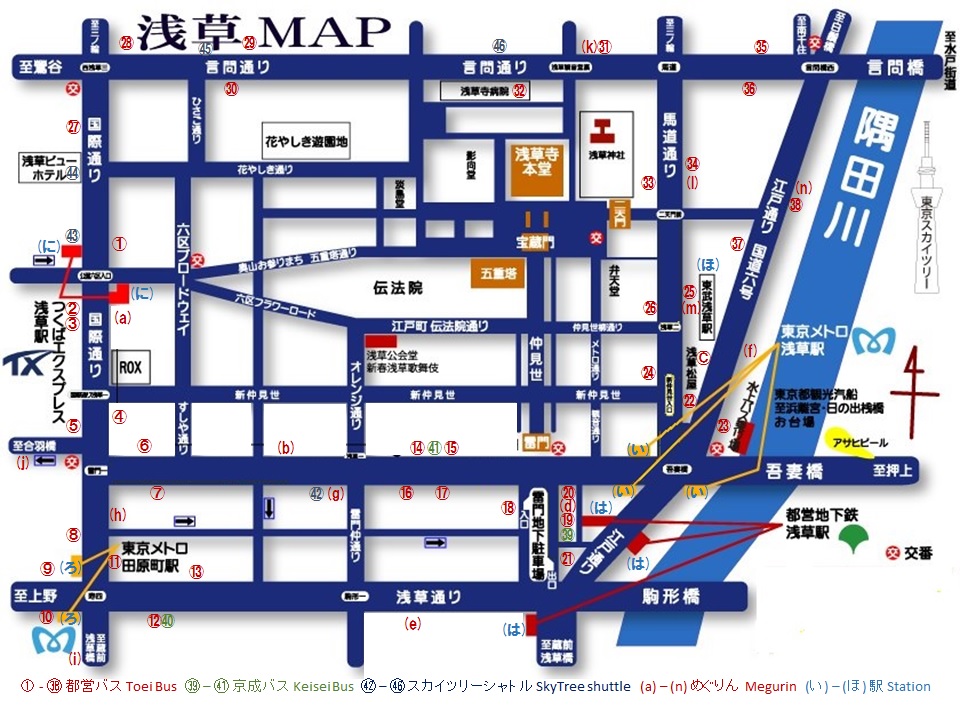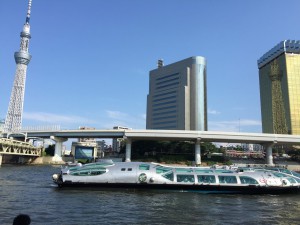Sightseeing Tours in Oku Asakusa
Edo people ‘s love Ikema Shotaro loved here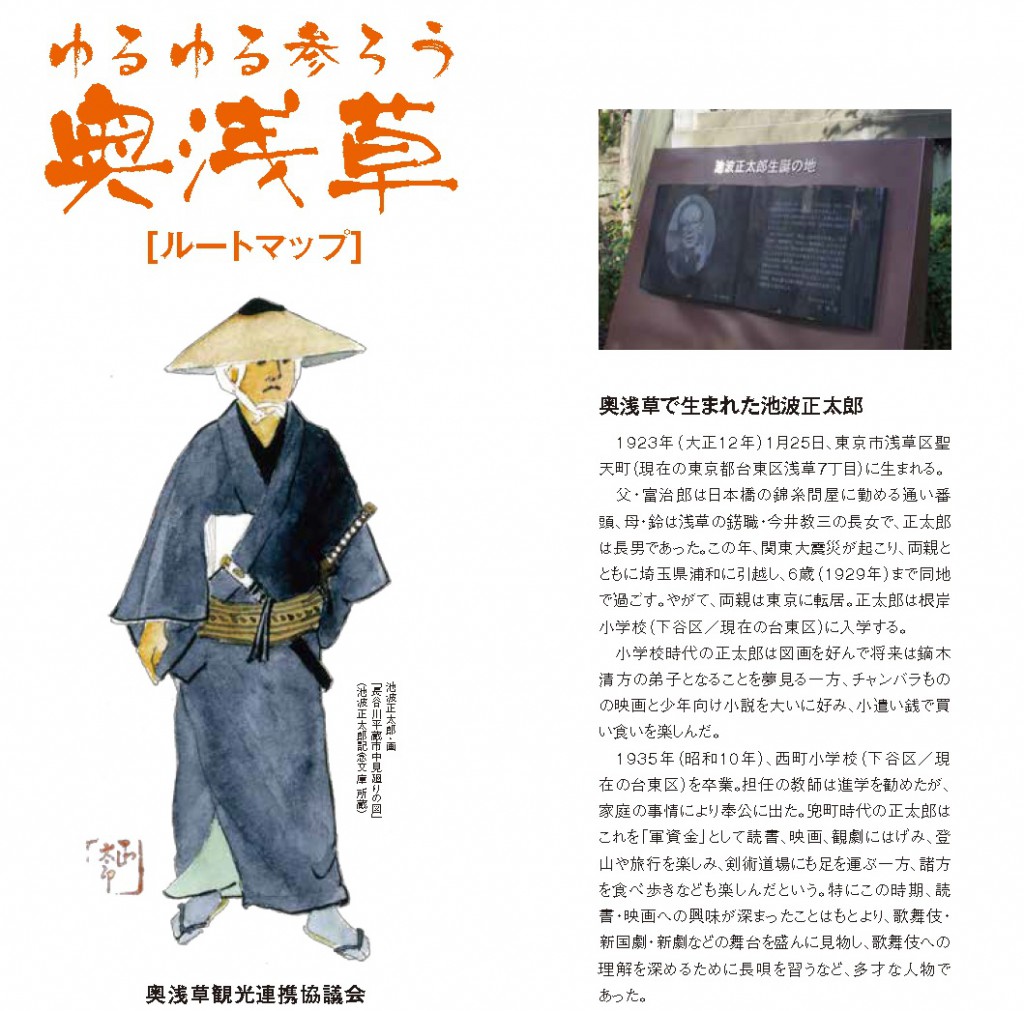
Asakusa represented by Kaminarimon, Asakusaji, Nakamise-dori.
“Oku Asakusa” hitting the north side of the Asakusa Temple is secretly becoming a hot topic now.Oku Asakusa facing the Sumida river in the east is also an area where you can see the history and romance of Yoshiwara and numerous shrines and temples, including Kabuki’s Edo Sansei site, in the northern area of Asakusa Temple and Language Plaza.
After the Meiji Restoration, it became a place for leather industry development as we switched to Western shoes.Not only traditional sightseeing, such as opening cafes and restaurants, it is drawing attention as a place to send retro modern information.
This time, a sightseeing tour will be held with the theme of “Shinkaro Ikegami’s world view” which is related to Asakusa.

root
① Okawabashi (AZUMABASHI)
Ogawa Bridge (Azumabashi)
In Okawabashi (Azumabashi) / Yasunaga 3 (1774), six townspeople bridged with the approval of the Edo shogunate.In the Sumidagawa river in Edo there are four bridges of the two countries, Permanent, Azuma, Shin-Ohashi bridge, other than Azumabashi bridge was built at the shogunate.The name is from “East Bridge” meaning that it is east of Edo or east of Edo, and the elegant notation “Azumabashi” was preferred.Meiji 9 (1876), officially became “Azumabashi”.
A
② SANYABORI HIROBA
Sanya Horigiri Square Asakusa 7-chome, Taito-ku, Tokyo 1-22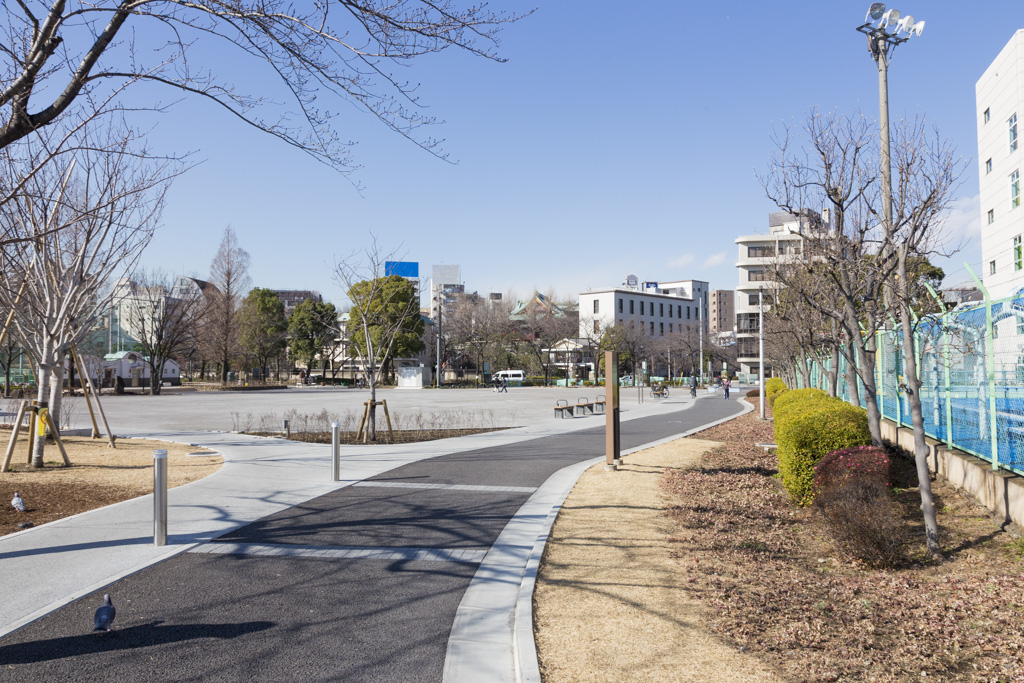
Sanya Hori Square / Square in the northern part of Sumida Park.”Asakusa Furusenma” which was the New Year’s Day event of the Asakusa Shrine in the Edo period will be shown at the Sumida Park Special Site, but in Yamiya Hori Square, long ago, in order to practice shooting, they were made to resemble a deer by bundling grass “Kusaka (Kusashi)” to shoot is held.
A
③ MATSUCHIYAMA SHOUDEN
Buddha mountain saintes 4-1, Asakusa 7- chome, Taito ku Tokyo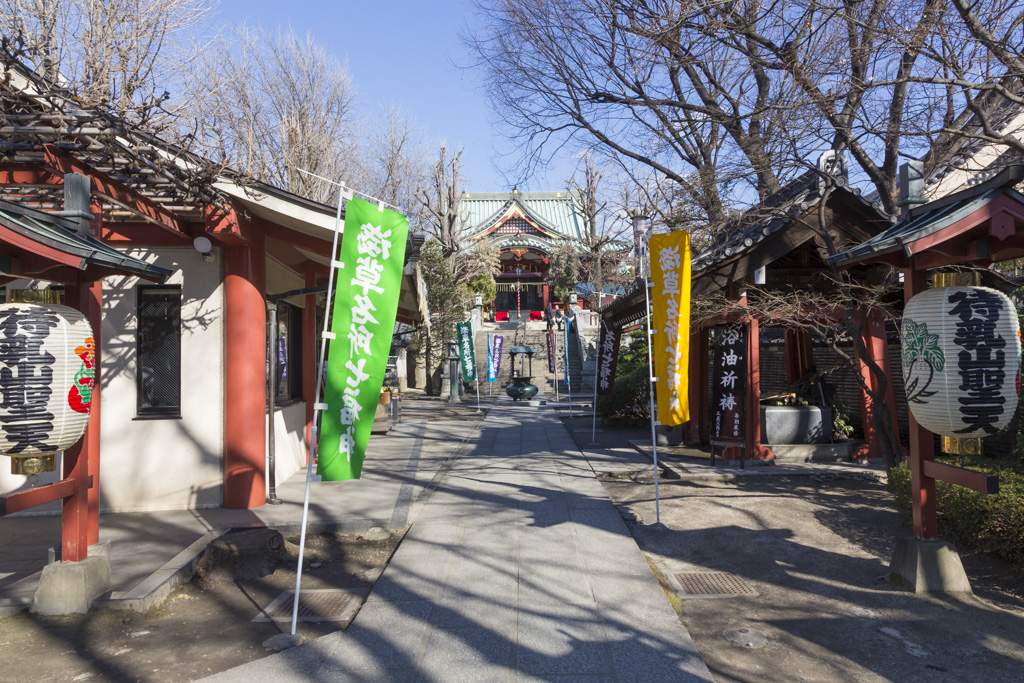
Budding mountain sacred sky / Mr. Honjin is holy.Asakusa is lively in the precincts, silence spreads out, and it is only called powerful power spot.In and around the precincts, radish and purse strings are displayed as carvings and paintings, the symbols of “Buddha mountain holy weather”.As having the effect of eliminating poison and anxiety in the body, providing radishes has a meaning to wash and cleanse themselves.In addition, the purse depicts a gold bag, and many people come to sacrifice in hopes of prosperous business.
A
④ CHOSHO JI
Chang Changji Temple in Taito-ku, Tokyo 2-32-16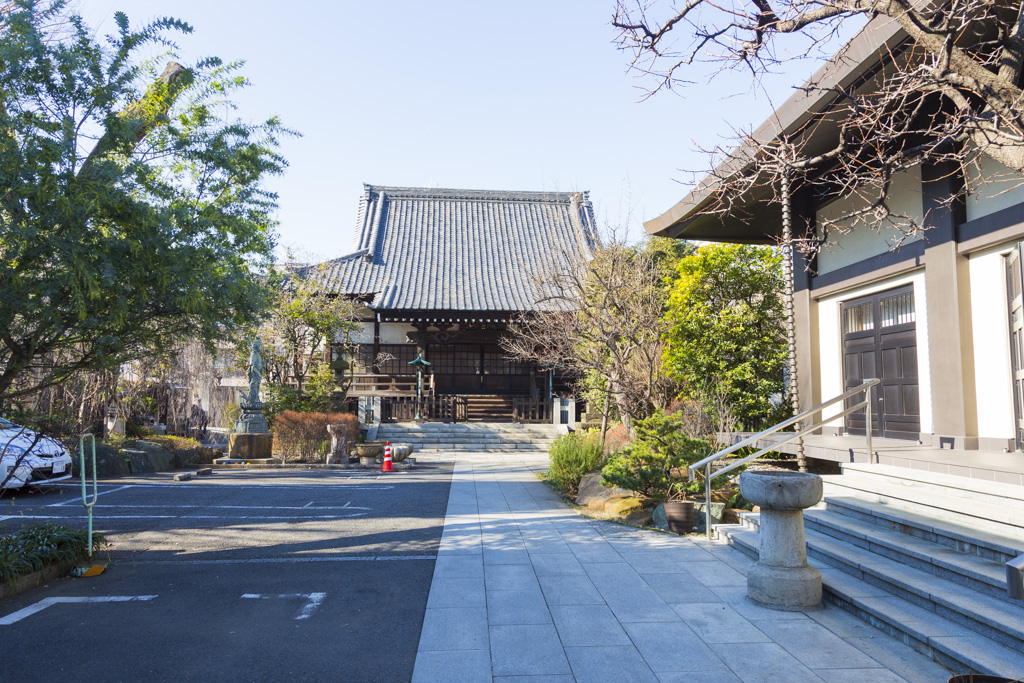
The Bonhai Buddha who served as the Asakusa temple crown opened as Myoshoji in the second year of Hong Kong (1279).After that, after being flooded with water, revived as current Yuan Won first year (1321) current location, renamed Changchangji Temple.
Deep Eiyuan Changjiang Temple is located in the west of the departure of Imado.This temple is said to have been a ruins of Nichiren Buddhism, a sunrise of the opening mountain, a boss of Sensoji temple at the beginning.(From Onepaira Kokado 11 Volume “Notice”)
A
⑤ HONSHO JI
Honjoji 1-1-2 Kiyokawa, Taito-ku, Tokyo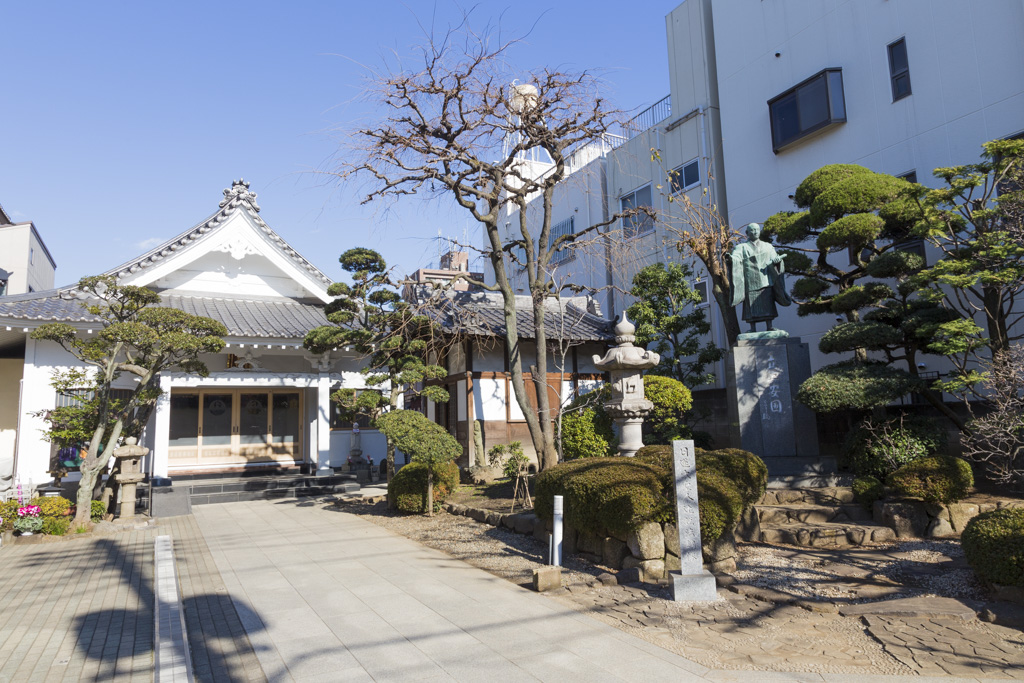
There is a grave of Akiyama self-cloud (shyuzanji yun) famous as “god of hemorrhoids”.Akiyama parents had dedicated incense to the remains of Shioka Reihiro who temporarily buried in the cemetery of Asukusa Imado’s Honno-ji temple.In Honjoji there is the tomb of Sadaka, the wife of Akiyama Kobei, also the mother of Daijiro.(From “swordsman business”)
A
⑥ MYOUKIDUKA (ASAJIGAHARA)
Myo Kamezuka (Asai Kagahara) 1-28-2 Hashiba, Taito-ku, Tokyo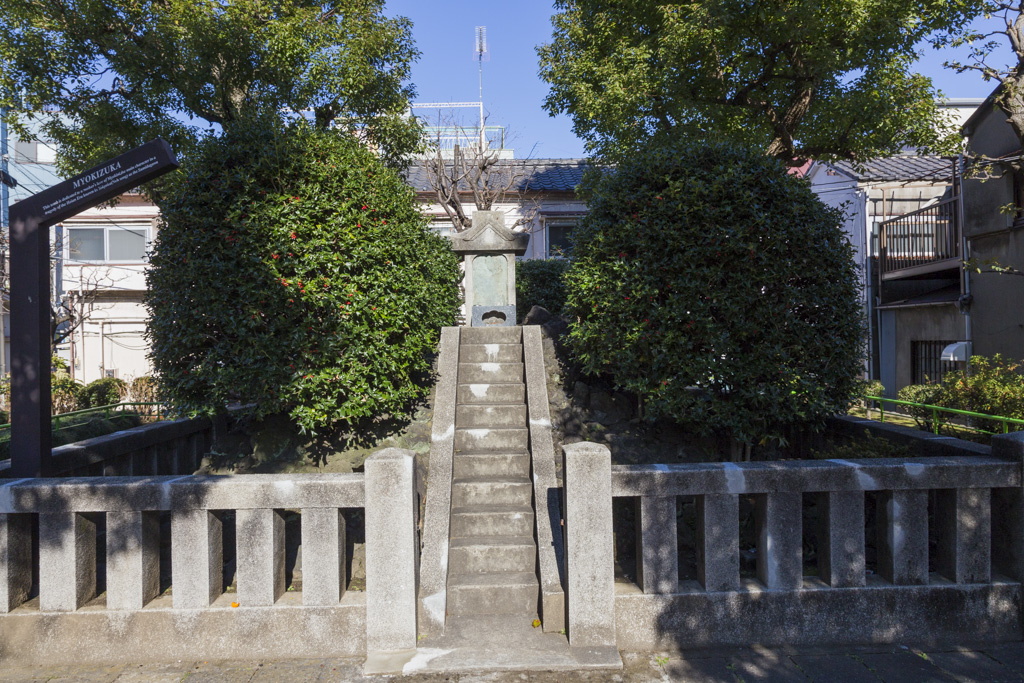
Mounds in a small park called Myo – Kamezuka / Myo – Kamezuka Park.This neighborhood is famous for Myo Takumi, a famous song “Sumida river” and a legendary land of its child Umiwakaru, a sanctuary tower standing in a small mound is set up and designated as a historic site of the capital.In the “swordsman business”, Akiyama Kobei, a guru who is an outflowist of the hero, built a poor living place and lived as a 40-year-old wife Oharu.
A
⑦ OBAKE JIZO (SOUSEN JI / SHOUGIN JI)
Haunted Jizo (Tsuchiji and Matsutenji) 2-22-2 Hashiba, Taito-ku, Tokyo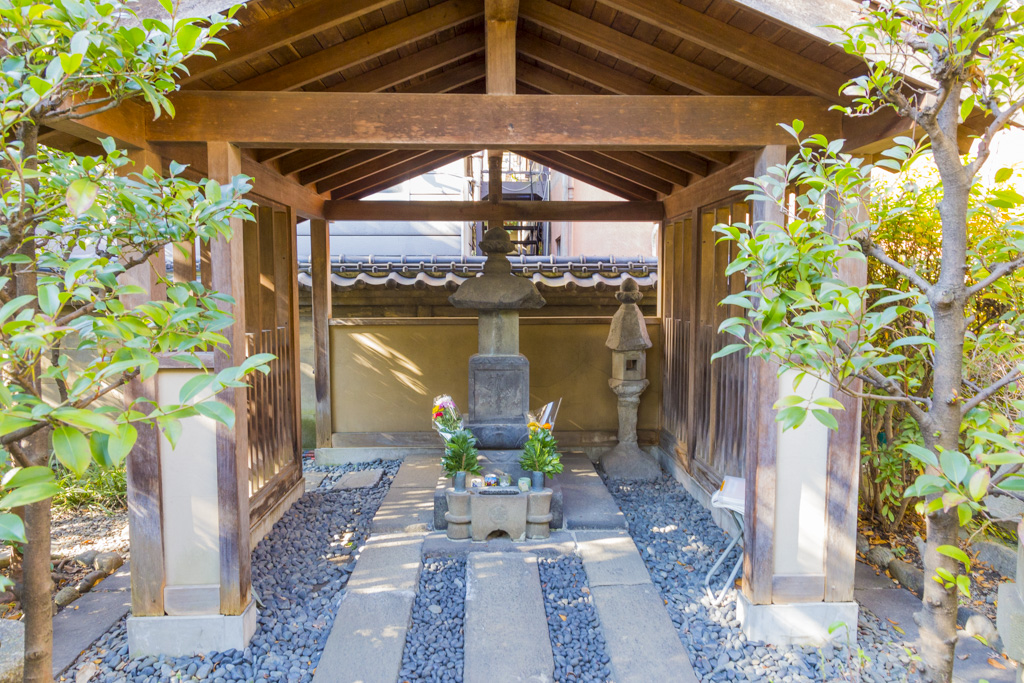
The grave of inventor · Hiraga Genji who played an active part in the late Middle Edo period, known for the restoration production etc of the Hiraga Genjiuchi / Electricity Building (Friction Electromotor).It caused a killing incident in Yasunaga 8 (1779) and it was said that he was buried in prison in Kodenma Town, buried in Tsuchiji temple located here, and even after Tsuchizenji moved to Itabashi Ward Azusawa, the tomb was saved here , In 1956 the Tsukiji fence was developed by Matsudaira Yoshinobu (the former Takamatsu clan owner), and was designated as a national historic site in 1964.
A
⑧ TAMAHIMEINARI JINJYA
Tamahime Inari shrine 2-13-20 Kiyokawa, Taito-ku, Tokyo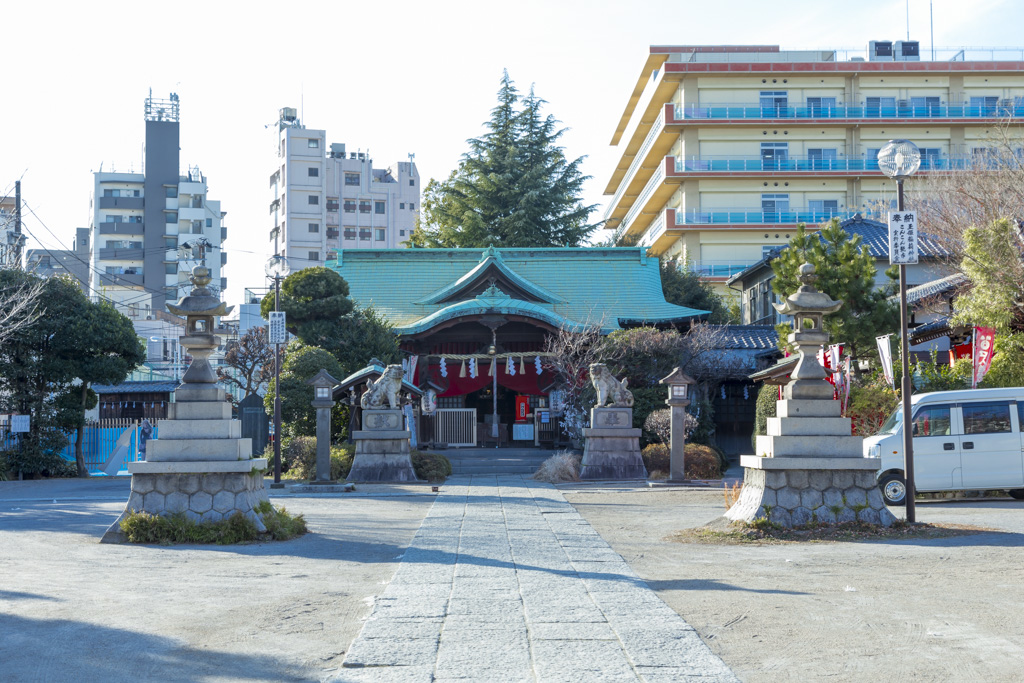
The foundation is Tempaira Buddhist Temple Fourth year (760 years) Now it is held twice a year, Konko shoe city is famous.Tamagi Inari is a small Inari shrine located in the west field of Asakai Bogahara in contact with Tsuchiji Temple.(From sword customer transactions)
A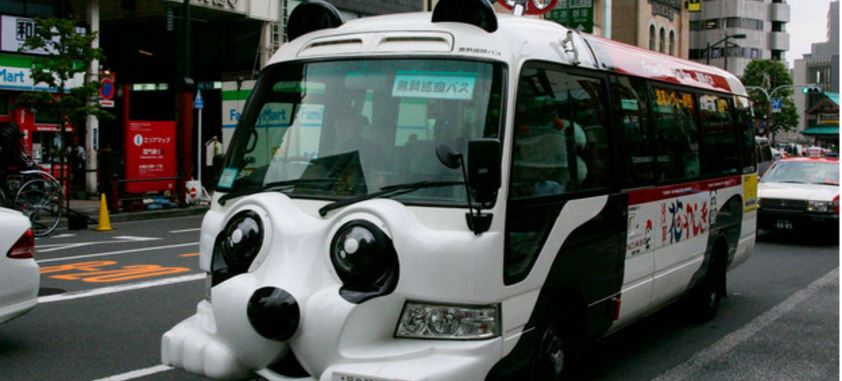
A
Break (meal) ICHIMON
Asakusa Kazumasa annex3-2-2 Asakusa, Taito-ku, Tokyo, 32-2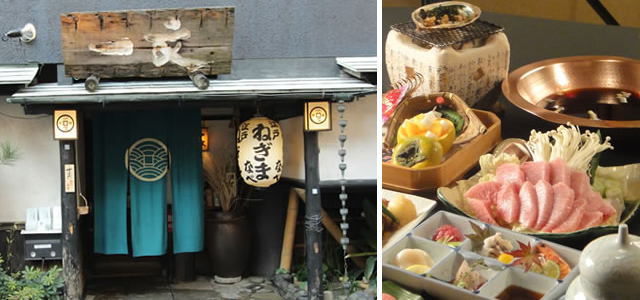
A
⑨ YOSHI WAR AOMON
Yoshihara Daimon Tokyo Sendai 4 – chome 10 Taito – ku, Tokyo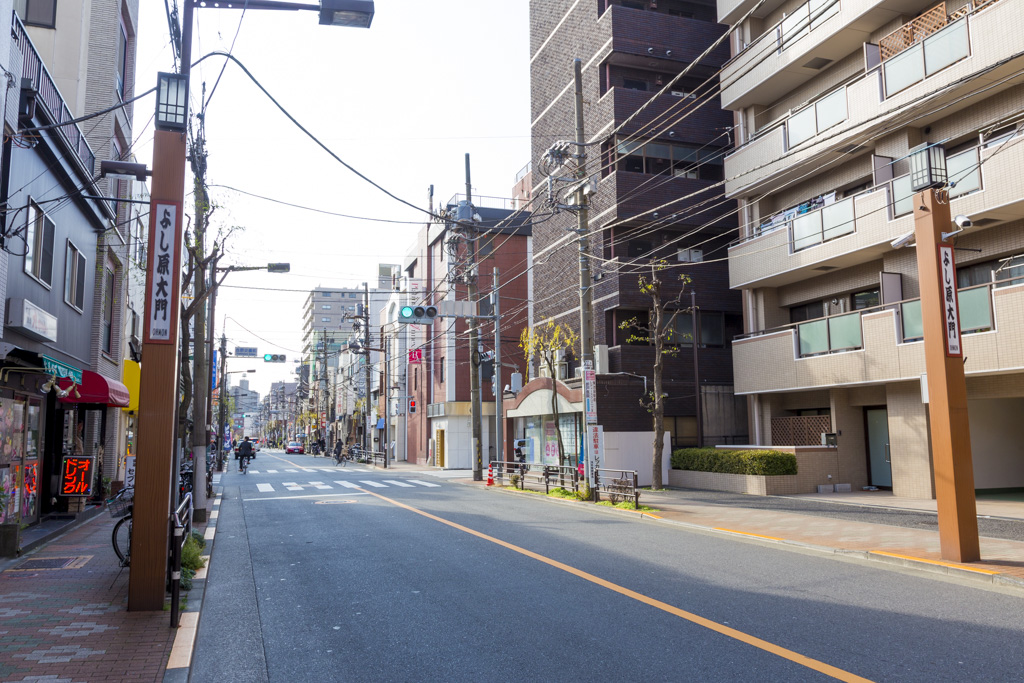
Yoshihara Daimon / The archaeological site of the gate which was set up at the entrance of Yoshiwara which is the authorization of the shogunate.In the Edo era it was a black arched arch tower (wooden), but it became an iron gate in the Meiji era, but it was destroyed by a large fire in 1911, and it was removed after the Great Kanto Earthquake.
A
⑩ YOSHIWARA JINJYA
Yoshihara Shrine 3-10-2 Sendobu Taito-ku, Tokyo
A
⑪ YOSHIWARA BENZAITEN
Yoshihara Bento-ten 3-22 Senju, Taito-ku, Tokyo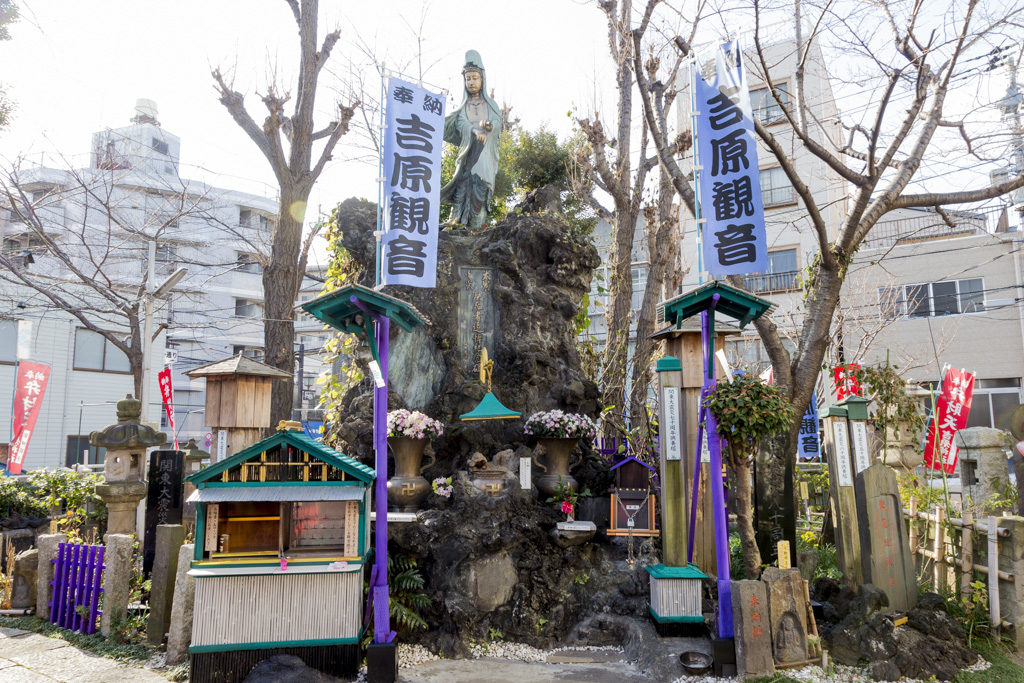
A
⑫SENGEN JINJYA
Asama Shrine 5-3-2 Asakusa, Taito-ku, Tokyo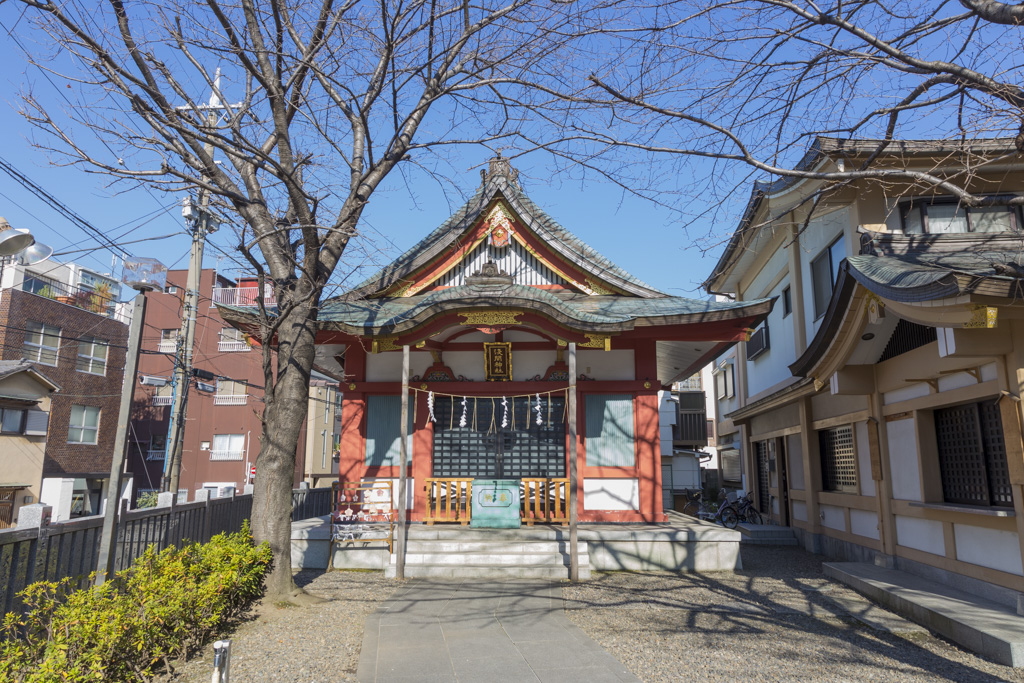
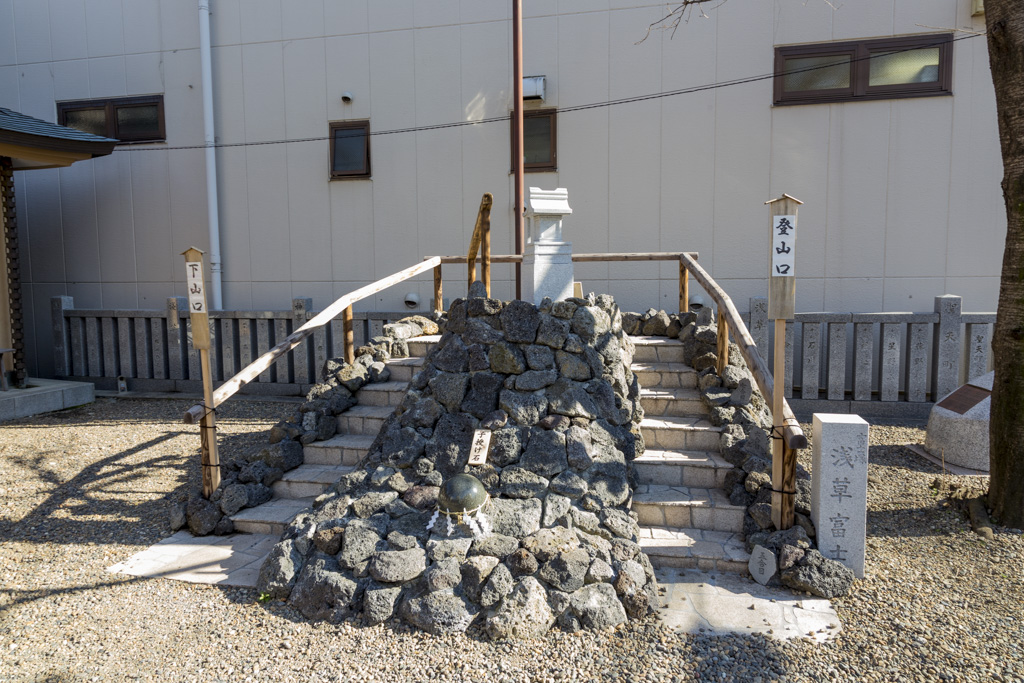
Asama Shrine / Shrine recommended on the basis of faith in Mt. Fuji, the wooden tree “Hanasaki Yayama princess life image” is settled as a body.Their age is unknown, but seems to have been settled by Hirofumi 11 years (1671) in the early Edo period.In the Edo era, under the control of Asakusa Temple Shuinzanin, rituals were conducted by Shurayama, and as a sacred place of the Fuji faith which is representative of Edo, we gathered respect for Fuji lecture courses in various places.
Fuji worship was a lifelong dream for the Edo people, Edo era, Fuji faith was born, and Asama Shrine was built all over the country.The foundation is unknown, and the torii are drawn in “Edo picture” before the Genroku year.We enjoyed the benefits of Mr. Fuji more than enough.Why? Fellows secretly gathered Kaneko to join in a mountain, this is also a merit.(From Onihei Kanban Book)
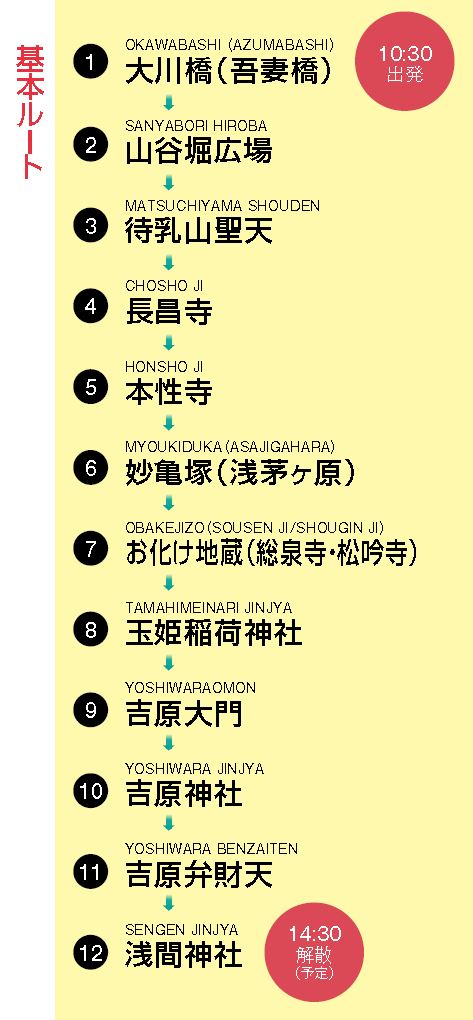
Download flyers here
General participants Oku Asakusa sightseeing tour
*This post automatically translated by google translator*






